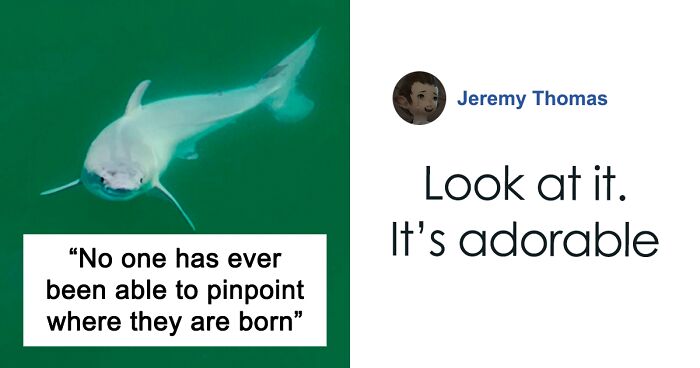
“Absolutely Mesmerizing”: Everyone’s Fawning Over First-Ever Photos Of A Baby Great White Shark
Gone are the days when we associated sharks with Steven Spielberg’s terrifying Jaws. Now, we celebrate all new marine life, including the species that has so often been misunderstood.
And in marine life news, a special announcement has been made about the first-ever sighting of a live newborn great white.
Great whites, the largest predatory sharks in the world with the most fatal attacks on humans, are tough to imagine as newborn babies. That is partially because it seems no one has seen one in the wild until now, the University of California said in an official press release.
- First live newborn great white shark sighted off Carpinteria, California.
- The shark's white appearance marked the shedding of its embryonic layer.
- Potential discovery of a new great white shark birthing location.
- Further research needed to confirm and protect potential breeding grounds.
But on July 9, 2023, while wildlife filmmaker Carlos Gauna and UC Riverside biology doctoral student Phillip Sternes were scanning the waters for sharks near Santa Barbara on California’s central coast, they spotted something exciting on the viewfinder of their drone camera.
Filmmaker Carlos Gauna and doctoral student Phillip Sternes spotted a great white shark off the coast of Carpinteria, California, USA
Image credits: TheMalibuArtist
Carlos and Phillip saw what had never been seen before: a shark pup unlike any they’d ever observed.
Great whites, referred to only as white sharks by scientists, are gray on top and white on the bottom. But this roughly 1.5-meter-long (5-foot-long) shark was pure white, swimming 400 meters (1,300 feet) off the coast of Carpinteria, California, USA.
Phillip said: “We enlarged the images, put them in slow motion, and realized the white layer was being shed from the body as it was swimming.
“I believe it was a newborn white shark shedding its embryonic layer.”
These observations were documented in a new paper in the Environmental Biology of Fishes journal. The paper detailed the significance of having seen a live newborn white shark.
Carlos, known online as The Malibu Artist, has spent thousands of hours filming sharks around the world.
He said: “Where white sharks give birth is one of the holy grails of shark science.
“No one has ever been able to pinpoint where they are born, nor has anyone seen a newborn baby shark alive.
“There have been dead white sharks found inside deceased pregnant mothers. But nothing like this.”
This roughly 1.5-meter-long (5-foot-long) shark is the first-ever sighting of a live newborn great white
Image credits: TheMalibuArtist
Carlos and Phillip acknowledged it was possible the white film the shark shed could have been a skin condition; however, the pair did not believe this to be the case.
Carlos explained: “If that is what we saw, then that too is monumental because no such condition has ever been reported for these sharks.”
Great white females give birth to live pups. While in utero, the embryonic sharks might feed on unfertilized eggs for protein. The mothers offer additional nourishment to the growing shark pups with a ‘milk’ secreted in the uterus, the release states.
Phillip said: “I believe what we saw was the baby shedding the intrauterine milk.”
Moreover, there is a presence of large, likely pregnant great whites in this location. Phillip had reportedly observed them there in previous years and in the weeks leading up to the observation.
He said: “I filmed three very large sharks that appeared pregnant at this specific location in the days prior.
“On this day, one of them dove down, and not long afterward, this fully white shark appeared. It’s not a stretch to deduce where the baby came from.”
“Where white sharks give birth is one of the holy grails of shark science,” Carlos said
Image credits: TheMalibuArtist
Additionally, the shark’s size and shape were also indicative of a newborn. What the two observed was thin, short, and rounded. “In my opinion, this one was likely hours, maybe one day old, at most,” Phillip explained.
The location off the coast of central California has long been proposed as a birthing location for great whites.
The biology doctoral student further stated: “There are a lot of hypothetical areas, but despite intense interest in these sharks, no one’s seen a birth or a newborn pup in the wild.
“This may well be the first evidence we have of a pup in the wild, making this a definitive birthing location.”
According to the release, many scholars believe great whites are born farther out at sea.
Ultimately, the pup being filmed so close to shore, roughly 1,000 feet from the beach, was described as being significant because its age means it was likely born in shallow waters.
Great whites are listed as an international endangered species. Phillip said: “Further research is needed to confirm these waters are indeed a great white breeding ground.
“But if it does, we would want lawmakers to step in and protect these waters to help white sharks keep thriving.”
You can watch the drone footage of the baby shark below:
Gavin Naylor, director of the Florida Program for Shark Research at the University of Florida and a curator at the Florida Museum of Natural History, said it is possible the sighting was a newborn great white shark but added that the finding is “highly speculative.”
He told CNN: “White sharks typically have between 8 and 12 pups at a time, so where are all the others?” Gavin wasn’t involved with Phillip and Carlos’ observation.
Nicholas Ray, a researcher at Nottingham Trent University in the UK, who has studied great white shark population dynamics in South Africa, called the sighting documented by Gauna and Sternes “fantastic.”
He told the American broadcaster: “This observation is hugely significant and is at the start of scientists’ understanding of the elusive reproductive cycles of this endangered species.
“It could unlock the door as a new discovery and reinforce the need for greater protection in these areas.” Nicholas wasn’t involved with the study.
“Just goes to show there’s still a lot to learn about sea life,” a reader commented
Poll Question
Thanks! Check out the results:
1k+views
Share on Facebook
 Dark Mode
Dark Mode 

 No fees, cancel anytime
No fees, cancel anytime 






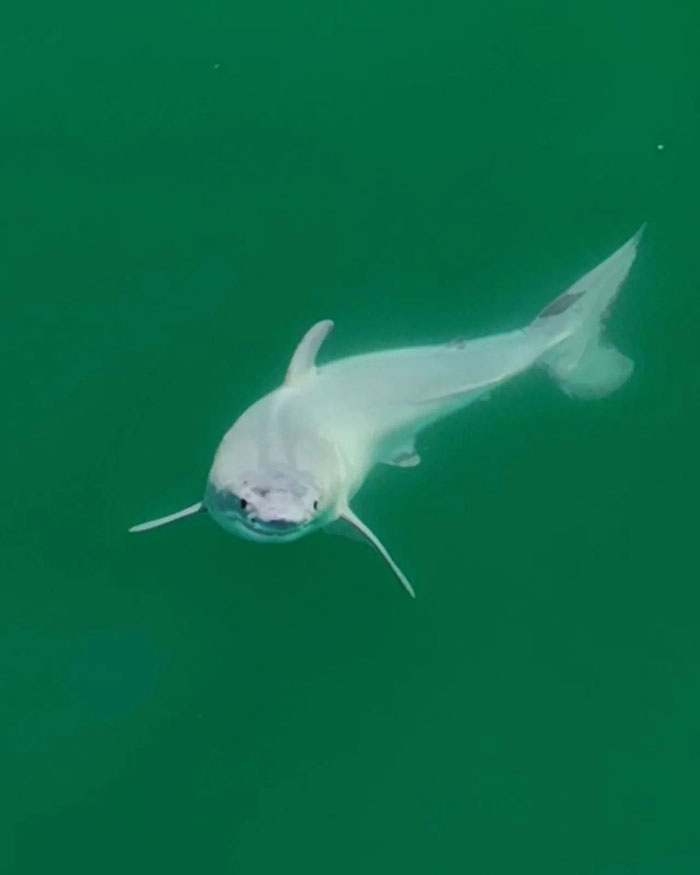
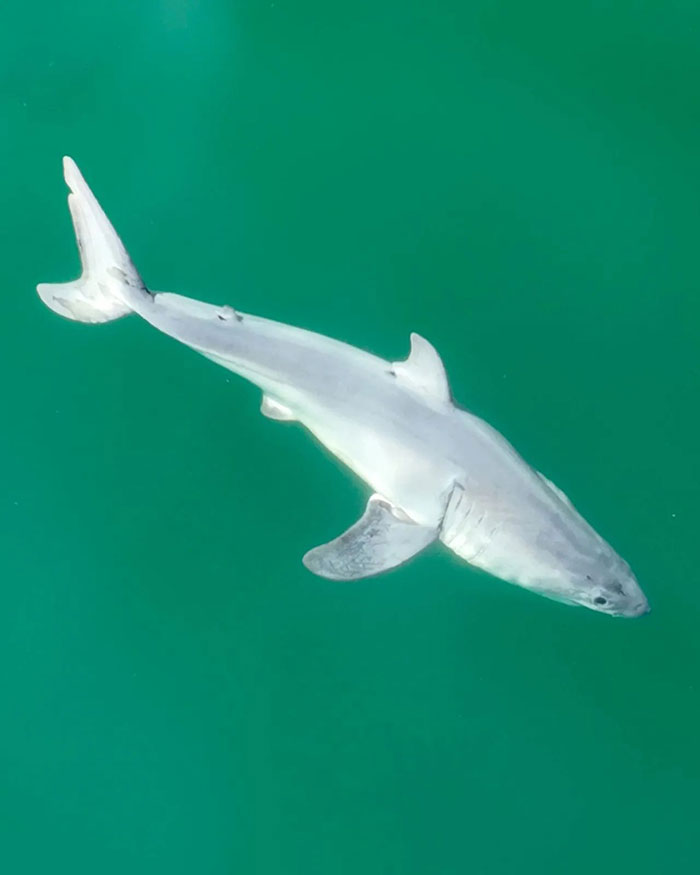
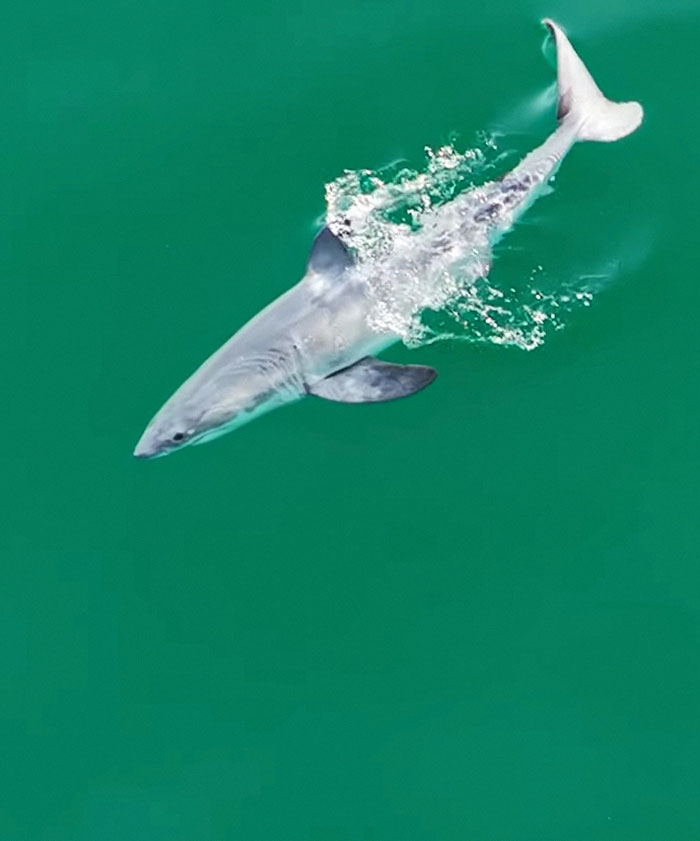

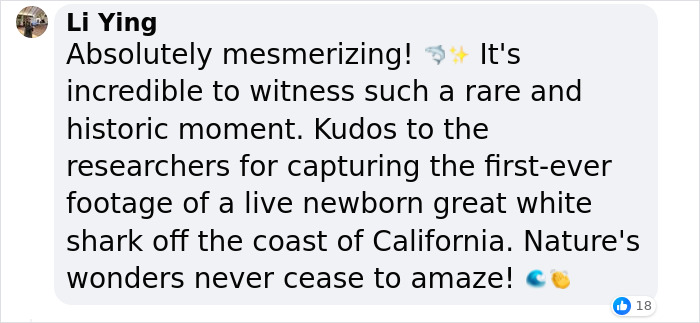





















































65
9